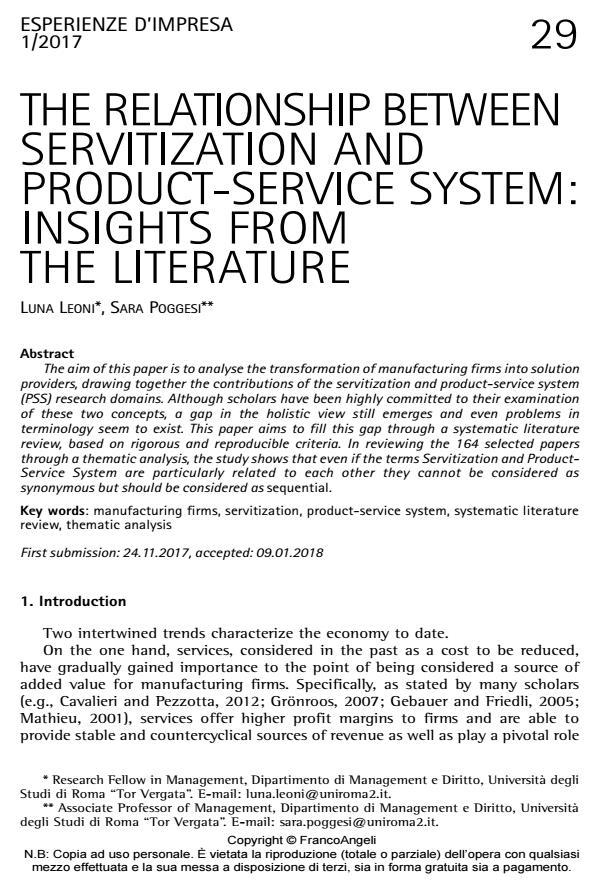The relationship between servitization and product-service system: insights from the literature
Journal title ESPERIENZE D'IMPRESA
Author/s Luna Leoni, Sara Poggesi
Publishing Year 2018 Issue 2017/1
Language English Pages 23 P. 29-51 File size 280 KB
DOI 10.3280/EI2017-001002
DOI is like a bar code for intellectual property: to have more infomation
click here
Below, you can see the article first page
If you want to buy this article in PDF format, you can do it, following the instructions to buy download credits

FrancoAngeli is member of Publishers International Linking Association, Inc (PILA), a not-for-profit association which run the CrossRef service enabling links to and from online scholarly content.
The aim of this paper is to analyse the transformation of manufacturing firms into solution providers, drawing together the contributions of the servitization and product-service system (PSS) research domains. Although scholars have been highly committed to their examination of these two concepts, a gap in the holistic view still emerges and even problems in terminology seem to exist. This paper aims to fill this gap through a systematic literature review, based on rigorous and reproducible criteria. In reviewing the 164 selected papers through a thematic analysis, the study shows that even if the terms Servitization and Product- Service System are particularly related to each other they cannot be considered as synonymous but should be considered as sequential.
Keywords: Manufacturing firms, servitization, product-service system, systematic literature review, thematic analysis
- A New Era of Value Creation – Vertical Value Creation Simon Schmidt, Thomas Bauernhansl, Thilo Schlegel, Jörg Siegert, in Procedia CIRP /2023 pp.661
DOI: 10.1016/j.procir.2023.09.055 - Sustainable Business Model in the Product-Service System: Analysis of Global Research and Associated EU Legislation Ana Batlles-delaFuente, Luis Jesús Belmonte-Ureña, José Antonio Plaza-Úbeda, Emilio Abad-Segura, in International Journal of Environmental Research and Public Health /2021 pp.10123
DOI: 10.3390/ijerph181910123
Luna Leoni, Sara Poggesi, The relationship between servitization and product-service system: insights from the literature in "ESPERIENZE D'IMPRESA" 1/2017, pp 29-51, DOI: 10.3280/EI2017-001002